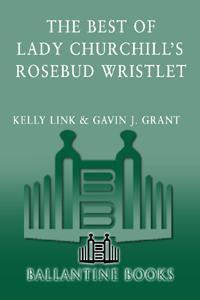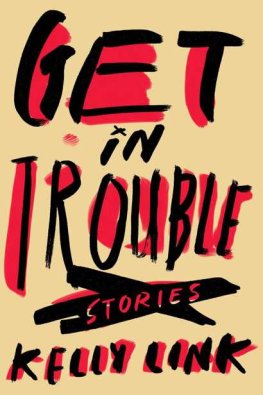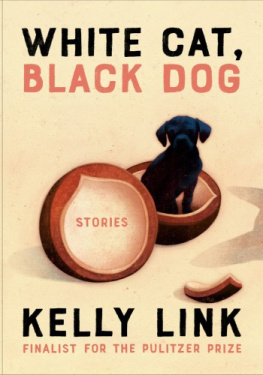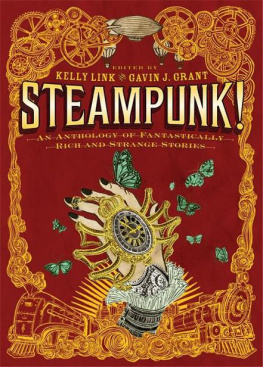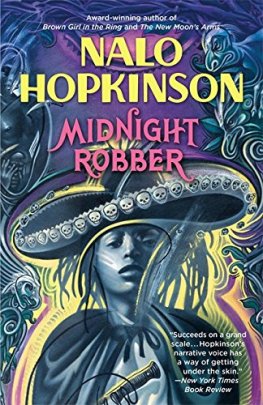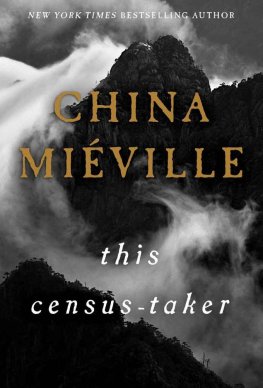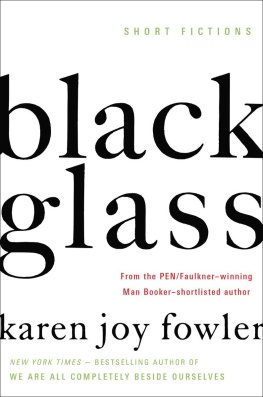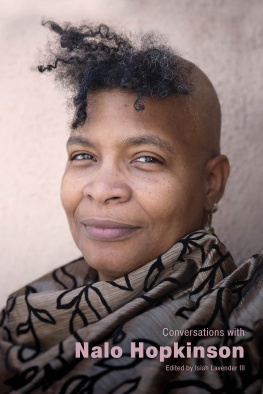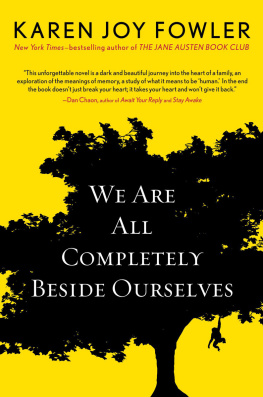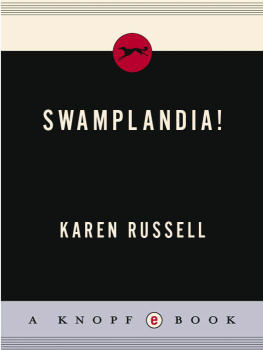


CONTENTS
For Richard Butner,
who is still owed some quotation marks
A (PARENTHETICAL) PREFACE
S OMETIME IN 1996, DURING THE LONG, HAZY HOURS OF Gavins temp job, and encouraged by the literary atmosphere of Boston bookstore Avenue Victor Hugo where Kelly was working, we decided to start a zine. Why not? We had access to a photocopier, and we knew some writers. Gavin walked by a travel agency advertising a $300 tropical vacation and decided that for that kind of money hed have more fun making a zine. (With hindsight, $300 is also a lot of books and beer.) Lady Churchills Rosebud Wristlet was inspired as much by pop culture ( Ben Is Dead, Dont Shoot Its Only Comics ) and personal zines ( Doris, Leeking Ink ) as by the suspicion that the kind of hybrid genre/literary fiction that we liked best was underrepresented in the magazines that we read.
We ran twenty-six copies of the first issue of LCRW off on someones photocopier. (We numbered it Vol. 1, No. 1.) It wasnt pretty, but it sold through. When we started to put together our second issue, we upped the print run and found a size and design we liked. (It was stapled then; its still stapled now.) We began to solicit fiction from newer writers, including Nalo Hopkinson and Dora Knez. Our goals since then havent changed much. We want to publish a mix of new and established writers. We want to publish work that surprises us. We want to have fun and break even.
The Best of LCRW represents ten years of photocopied stories, a continued commitment to sending chocolate bars, intact and more or less unmelted, through the mail (see the subscriptions page at the back), and manytoo manylate nights spent struggling with Word, PageMaker, Quark, and now InDesign. That we still spend those late nights reading submissions, laying out pages, and addressing mailing labels, is thanks to the many wonderful writers who continue to send us their best and oddest work. And thanks, also, to the subscribers and casual browsers who have picked up a zine with a very odd title at bookstores like Dreamhaven, Borderlands, Powells, Prairie Lights, and Quimbys.
Perhaps youre wondering about the name. Lets just say it cost us quite a few pennies in consultancy fees from a famous marketing firm, a group of people (corporation sounds so corporate) so well known we dont feel the need to name themlets just say that they were the first agency to name trees after subdivisions. We wanted something simple and mimetic: a single word that would summarize everything you (yes, you) wanted from a magazine, a word that would intrigue you so much you had to buy that word, had to take it home where you would ignore your roommate and/or your kids and your little dog, too, because you had to read it now . But it turned out that Fiction, Story, Zine, Playboy, Naked People, and Free Money Inside were either already in use or else presented legal difficulties. Eventually, for entirely other than commercial reasons, we named ourselves after the rosebuds that Winston Churchills mother, Jennie Jerome, was reported to have had tattooed around her wrist. Fascinating woman, Lady C., fascinating.
Over the course of the past ten years, weve published over two million words worth of fiction, poetry, reviews, and lists in LCRW. (If Gavins questionable breakfast-table math is correct.) Weve felt for a long time that the writers we include in LCRW deserve a much wider readership than the one we can reach by publishing a twice-a-year zine, and we were ecstatic when Jim Minz, our editor at Del Rey, agreed with us. (Thank you, Jim. Thank you, Chris and Fleetwood and Betsy.) If we could have, we would have included more material from each issue in this anthology, and over the last year, while working on this project, we thought about how to accomplish this. We considered shrinking the font size and including a magnifying glass. Losing the margins. Offering a supplement. Leaving out all punctuation marks. (We did that once by mistake, and were still apologizing. Sorry, Richard.) But in the end, we drew straws, made up lists, argued a lot (but friendly arguingover drinks, not knives), and then left out some of our favorite stories. So this is really The Best of LCRWSo Far . Since we intend to keep putting out our zine, at some point well just have to do another one.
Hope you enjoy digging around in here as much as we enjoyed putting it all together.
Two notes about the zine:
1. LCRW comes out twice a year. Should you wish a third issue, please send us a check for $1,000. That issue will be the Your-Name-Here Issue.
2. A new literary award. We believe everyone is special (even those people who dont reador write forLCRW, but this award is not for them). Here is the press release: Northampton, MA. LCRW and Small Beer announces The Eponymous Award, given to all writers on publication in LCRW of their writing. So, Bob Smith has been awarded the Bob Smith Award for Fiction Writing. Jane Smith has been awarded the Nonfiction Award. D. K. Smith has been awarded the Poetry Award. You get the idea. In fact, for getting this far, you deserve an award. You have just been awarded the Reader Who Reads Notes Award (fill in the year here_____). Congratulations!
LADY CHURCHILLS ROSEBUD WRISTLET
AN INTRODUCTION
Dan Chaon
W HAT IS IN THIS CONTAINER?
SOMETIMES IT IS HELPFUL to have a label. Ingredients, categories, affiliations, and so on. One reason to create a label is for the readers, who would like to know what they are getting themselves into.
For example, it might be simplest to say that the focus of the magazine called Lady Churchills Rosebud Wristlet has been weird or speculative fiction. But then what does that mean, exactly? Does that mean science fiction? Fantasy? Horror? Does it mean, for example, dwarves and faeries and hobgoblins sitting around drinking mead out of acorns? Postnuclear holocaust cannibal mutants with a taste for sexy college students? Zork and Zurk fencing with laser sabers on the flight deck whilst Becka the plucky intern tries to maneuver the spaceship through a cluster of asteroids?
WHICH IS TO SAY that certain kinds of labels have certain kinds of connotations. When I was a college student, for example, I took a class in writing fiction. I wrote a story in which a little girl lives in a castle with her dying grandmother and her only friend is a telepathic severed human head that is floating in a jar on a shelf in the castle library. The story had some problems, I admit, but the teacher handed the story back with only one comment: Dan~ I dont accept genre fiction in this course! By which the teacher meant, among other things: no dwarves, faeries, cannibal mutants, spaceships, asteroids, etc. No telepathic severed human heads. NO GENRE FICTION!!!
Genre fiction, we learned, was generally concerned with formulaic plots and one-dimensional characters, and was written in trite, hackneyed prose.
Literary fiction, on the other hand, was primarily realistic and focused on depth of characterization and complexity of thought. It valued the beautiful sentence and the well-made paragraph. It often ended with a moment of epiphany that was represented by a metaphor.
So I wrote a story in which a little girl lives on a farm in Nebraska with her dying grandmother and her only friend is an alcoholic deaf-mute farmhand who lives in a trailer nearby. In the end, she has an epiphany in which she imagines the farmhand communicating to her telepathically, but the telepathy is a metaphor for her yearning to be close to someone. The teacher wrote: Dan~ powerfully realistic and moving!
Next page
